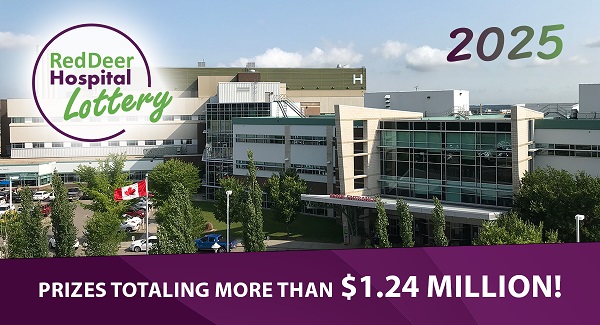Community
The federal government just did the bare minimum to improve intergovernmental coordination on housing

From the MacDonald Laurier Institute
By Josef Filipowicz and Steve Lafleur
On balance, the federal government shows little interest in tying the demand side of Canada’s housing equation to the supply side
Housing policy is typically thought of as a local government issue. After all, municipalities largely control the number and types of dwellings ultimately allowed to be built across Canada. They also, generally speaking, have the most control over the supply side of the housing market of any order of government – and supply hasn’t been doing too well for decades now.
If there’s one area of housing policy where municipalities can be excused, it’s in their (in)ability to project housing demand. The blame for that lies with the federal government. Let us explain.
Housing demand – that is, the number and types of dwellings desired in Canada – is the result of factors like incomes, credit, and, probably most importantly, population growth. Municipalities, in their defence, control none of these.
Incomes are determined by market factors (and, to an extent, by federal and provincial taxation), while the strongest credit levers lie with the Bank of Canada or other national entities. Population growth, for its part, is no longer primarily driven by births and deaths. Canada-wide, it is almost exclusively determined by federal immigration policy. To wit, Statistics Canada reported that roughly 98% of the growth in the Canadian population from July 1, 2022, to July 1, 2023, came from net international migration, with 2% coming from the difference between births and deaths.
In other words, local governments have the strongest levers affecting the supply of housing, while the federal government has the strongest levers affecting the demand for housing.
But, as we discussed in a recent report for the Macdonald Laurier Institute, the three levels of government (federal, provincial, and municipal) don’t coordinate all that much when it comes to housing. The decisions guiding population growth, such as medium-term immigration targets, immigration eligibility criteria, and temporary residency policies, don’t take critical factors like the number of homes available across Canada into account. In fact, at the time of our report’s publication, in March 2023, none of the federal-provincial agreements that guide immigration planning even mentioned the word “housing.” Adjacent terms, such as access to settlement “services,” “activities,” or “requirements” are mentioned, implying a possible link, but none explicitly mention the need for a quantitatively or qualitatively adequate housing supply.
Meanwhile, the processes local governments use to guide future growth, including infrastructure needs (e.g., sewers, roads, water, schools) and zoning bylaws, don’t reflect the magnitude of housing demand. For example, the Growth Plan for the Greater Golden Horseshoe, which guides how cities in Canada’s largest urban area (anchored by Toronto) should grow over the long term, was first drawn up in 2006 and wasn’t updated until 2019/2020. This means that any changes to population projections occurring after the plan’s enactment were not taken into account when planning for the many homes needed to accommodate a growing population.
So why is this a problem?
Canada’s population growth has reached historic levels. 2022 was the first year where Canada grew by more than one million people, and 2023 appears to be on track for similarly high growth. This level of growth was not anticipated in the population projections that inform local growth plans. In fact, the Ontario government’s own set of 10-year growth targets on larger cities, imposed in 2022 in an attempt to short circuit lagging local projections, are already largely obsolete. Why? Because the federal decisions determining growth can change from year to year – and in recent years the feds have consistently augmented the number of permanent and temporary migrants coming to Canada. Put another way, the population estimate goalposts appear to move further out every year, preventing local governments devising adequate plans on how to reach them.
The picture here is bleak, as any efforts to adequately house a growing Canadian public quickly become obsolete. Local governments undertaking years of preparation and public consultation to enact their growth plans might even find themselves in a situation where their projections are outdated before the ink even dries. This must be deflating, as it undermines the entire process by which Canadian communities do their best to grow at a steady pace while balancing the interests of many stakeholders.
Is there any good news?
The short answer is ‘yes.’ The federal government appears to have acknowledged the mounting chorus of commentary criticizing its lack of consideration of basic elements such as housing needs and capacity when setting medium-term immigration targets. The latest targets, announced on November 1, 2023, hold the annual number of permanent residents steady at 500,000 per year starting in 2026, while also committing to “take action over the next year to recalibrate the number of temporary resident admissions to ensure this aspect of our immigration system also remains sustainable.”
Immigration, Refugees and Citizenship Canada – the ministry responsible for setting targets and eligibility – also released a report outlining some planned changes to immigration policy. Notably, the report includes a section dedicated to the development of “a comprehensive and coordinated growth plan,” including a commitment to “Seek to integrate housing and health care planning, along with other important services, into planning Canada’s immigration levels.” Somewhat more specifically, it commits the Ottawa to “explor[ing] options to develop a more integrated plan to coordinate housing, health care and infrastructure between federal government departments, and in close collaboration with provinces, territories and municipalities.”
But that’s about it. No specifics on local housing capacity, or on predictable numbers of non-permanent residents, both of which are necessary to ensure balanced growth. Unfortunately for local governments trying to adequately plan for growth, it looks like they’ll have to wait and see as the federal government determines whether and how it might make Canada’s rate of population growth more predictable.
So what can be done?
The federal government appears reluctant to meaningfully diverge from its traditional approach to immigration policy in the near term. However, a greater willingness to engage with other levels of government is a positive development. Local and provincial governments are well placed to determine their capacity to plan for and build housing, as well as other necessary infrastructure to support growth. Further, they already have a role in drafting the agreements that guide medium-term immigration plans. They should make the most of this opportunity by ensuring that all departments and ministries directly involved with the delivery of infrastructure and housing play a direct, leading role in drafting input guiding immigration policy. Specifically, their input should include hard estimates of communities’ capacity to increase housing and infrastructure development, helping frame future immigration targets, criteria, and strategies.
On balance, the federal government is still showing little interest in tying the demand side of Canada’s housing equation to the supply side. Nevertheless, its recent changes to immigration policy offer a sliver of hope to local governments struggling to anticipate future growth needs. Provinces and municipalities should make the most of this opportunity, helping bring both sides of the housing equation a little closer to one another.
Josef Filipowicz is an independent policy specialist focusing on urban land-use issues including housing affordability, taxation and municipal finance.
Steve Lafleur is a public policy analyst who researches and writes for Canadian think tanks.
Community
Support local healthcare while winning amazing prizes!

|
|
|
|
|
|
Community
The 2025 Red Deer Hospital Lottery is here! Lower ticket prices!!

|
|
|
|
|
|
-

 2025 Federal Election2 days ago
2025 Federal Election2 days agoStudy links B.C.’s drug policies to more overdoses, but researchers urge caution
-

 2025 Federal Election2 days ago
2025 Federal Election2 days agoCarney’s Hidden Climate Finance Agenda
-

 Business2 days ago
Business2 days agoIs Government Inflation Reporting Accurate?
-

 2025 Federal Election2 days ago
2025 Federal Election2 days agoWhen it comes to pipelines, Carney’s words flow both ways
-

 2025 Federal Election2 days ago
2025 Federal Election2 days agoPolls say Canadians will give Trump what he wants, a Carney victory.
-

 2025 Federal Election1 day ago
2025 Federal Election1 day agoThe Anhui Convergence: Chinese United Front Network Surfaces in Australian and Canadian Elections
-

 2025 Federal Election18 hours ago
2025 Federal Election18 hours agoPoilievre Campaigning To Build A Canadian Economic Fortress
-

 Automotive18 hours ago
Automotive18 hours agoCanadians’ Interest in Buying an EV Falls for Third Year in a Row











